'We're a deeply divided society': inside the battle for Hong Kong
by Michael RufflesIt's 50 minutes into lunch and the burning question can be resisted no more. Antony Dapiran has spoken of everything from Hong Kong's protests to the pandemic, from how students tested Molotov cocktails in an empty swimming pool to the police firing live rounds at citizens, and along the way made me jealous of the dumplings he had delivered from the next suburb over (mine came from the freezer).
But on Skype I can only see three-quarters of the painting behind him, and I want to know what's going on.
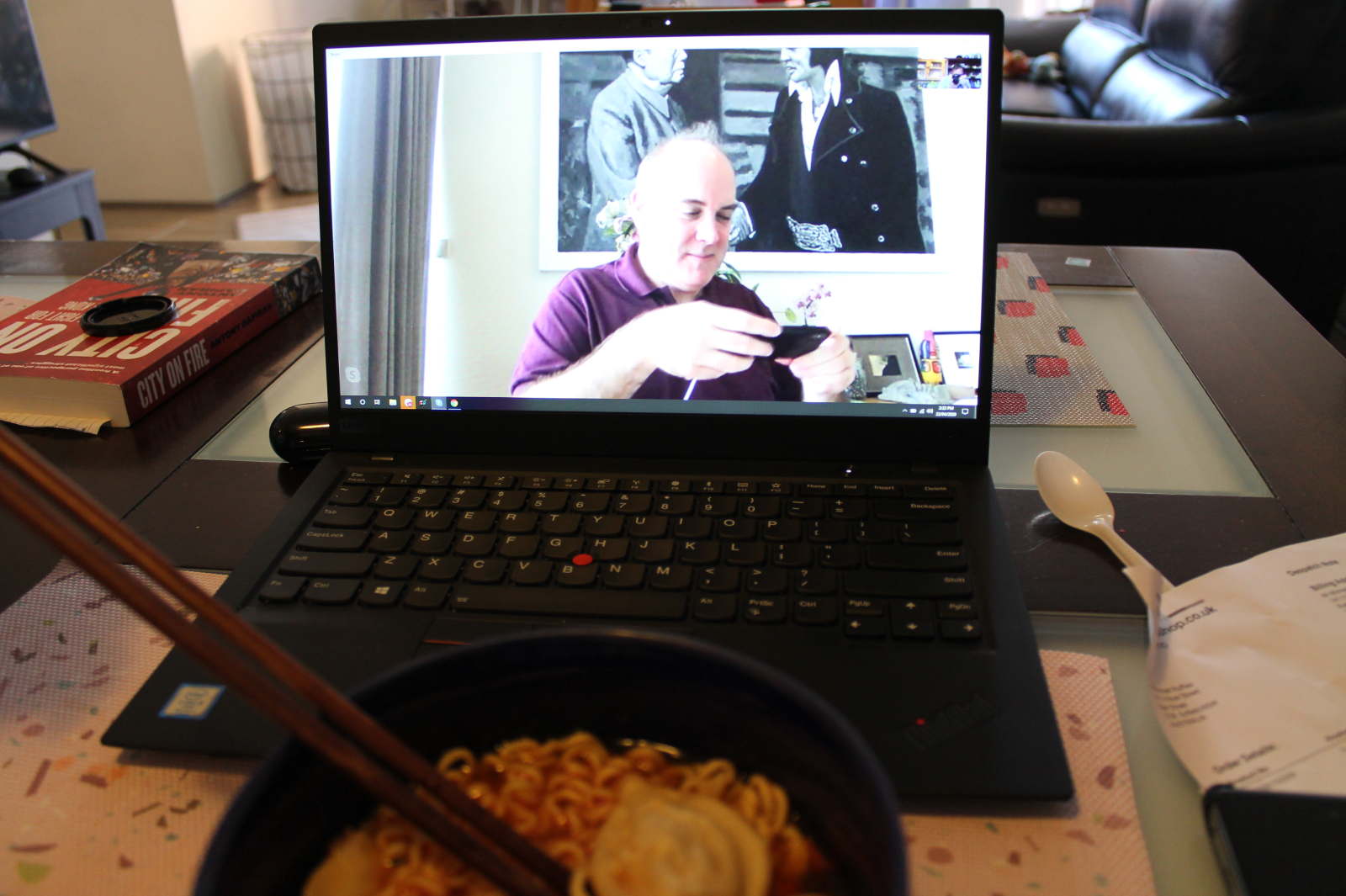
The Australian-born, Hong Kong-based journalist and author laughs and tilts the camera to show it in full. Mao Zedong is shaking hands with Elvis Presley, a meeting that happened in the imagination of painter Shi Xinning.
"His thing is painting Mao into various historical scenes from the West," Dapiran explains. "He's got a painting for example of Mao at the Potsdam Conference sitting alongside Churchill and the others, Mao standing next to Marilyn Monroe as her skirt's blowing up in that famous photo. This is Mao meeting Elvis. I've always had an interest in contemporary Chinese art and I wouldn't call myself a collector, but I've got a few things over years from living in Hong Kong and China that appealed to me. This is quite a fun one."
Imagery is a recurring theme in his book City on Fire, an account of last year's protests which in an ideal world he would have been in Australia recently to launch and discuss at three writers' festivals. The statue known as Lady Liberty, replete with hard-hat and mask, clutching an umbrella in one hand and a protest flag in the other; the memes that circulated online in Cantonese both mocking the government and providing a sense of solidarity; the protest art, graffiti and the Post-It note messages that lined walkways and tunnels and became known as Lennon walls throughout the city would have featured in his presentations.
As the Hong Kong protests, which reignited last week, stretched into months last year, Dapiran says these images served not only as a means of protest and communication but as an expression of cultural identity.
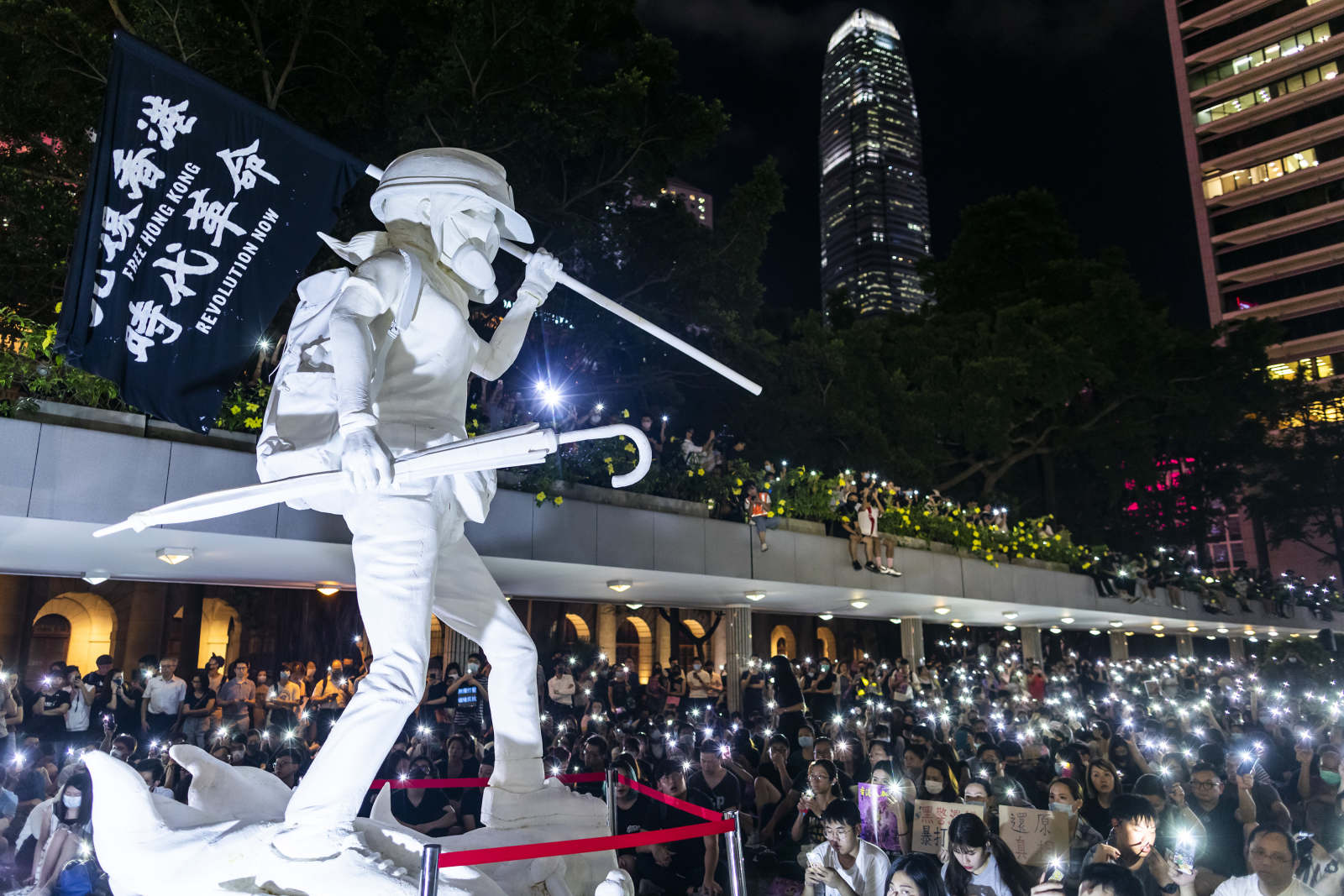
"Ultimately I think everything that is happening in Hong Kong, the protest movement and everything is about the anxiety over Beijing's influence and encroachment on Hong Kong and the desire to preserve and maintain a unique Hong Kong identity," he says. "And that's both in terms of political rights and freedoms and political autonomy, but also a cultural identity. Having cultural expressions of that identity is an incredibly important way to build sentiment and build support for the movement and rally the community around this idea."
Along with an art lover's eye, Dapiran brings a lawyer's brain to the events of last year. He has divided his time between Beijing and Hong Kong since arriving in the capital as a law student in 1999, and uses this experience to contextualise not only the constitutional questions at the heart of the protests but the criminal case which set the events in motion: a transnational crime of passion. He also looks to history, and parallels with Berlin in the Cold War and Belfast during the Troubles.
"Hong Kong's always defined itself by contrast to the rest of China and indeed much of the rest of Asia as a place where there have been more rights and freedoms, in the same way that West Berlin was sort of an island in the middle of East Germany and the Soviet Bloc," he says.
"As for Northern Ireland, I think I see that more as the warning of where we need to be careful we don't end up. We're clearly not there yet, but we're definitely a very deeply divided society here."
'That was the day when I thought this is really crazy, frankly. That was the day that was really shocking.'
The most worrying sign for Dapiran is the number of people speaking of a willingness to give their lives for the cause. "Now thank goodness that's only been, at most, talk and nothing more than that, but it's always dangerous to have people expressing ideas in those terms when you've had a city with violent protests and a lot of conflict between people and the police."
At its worst, during the siege of Polytechnic University for nearly two weeks in November, the violence resembled medieval warfare.
"I mean there were catapults set up on the roof, protesters using bows and arrows and then the police of course with the water cannons and rubber bullets all these sorts of things. And then the big stand-off on the bridge where the protesters all had their shields interlocked like a Roman legion phalanx, and police water cannons and armoured vehicles approaching from the other side. It looked more like warfare than anything we've seen previously on the streets of Hong Kong and that was the day when I thought this is really crazy, frankly. That was the day that was really shocking."
Getting to that point took months, and the slowly escalating violence became "frighteningly normalised". In the early days, when on one Sunday two million people took to the streets, the protests were peaceful and optimistic. There was a hope the government of Chief Executive Carrie Lam, albeit backed by Xi Jinping in Beijing, could not ignore the sheer weight of numbers. The euphoria of the early marches, when Dapiran sensed he was witnessing history, gave way to anger when few concessions were won.
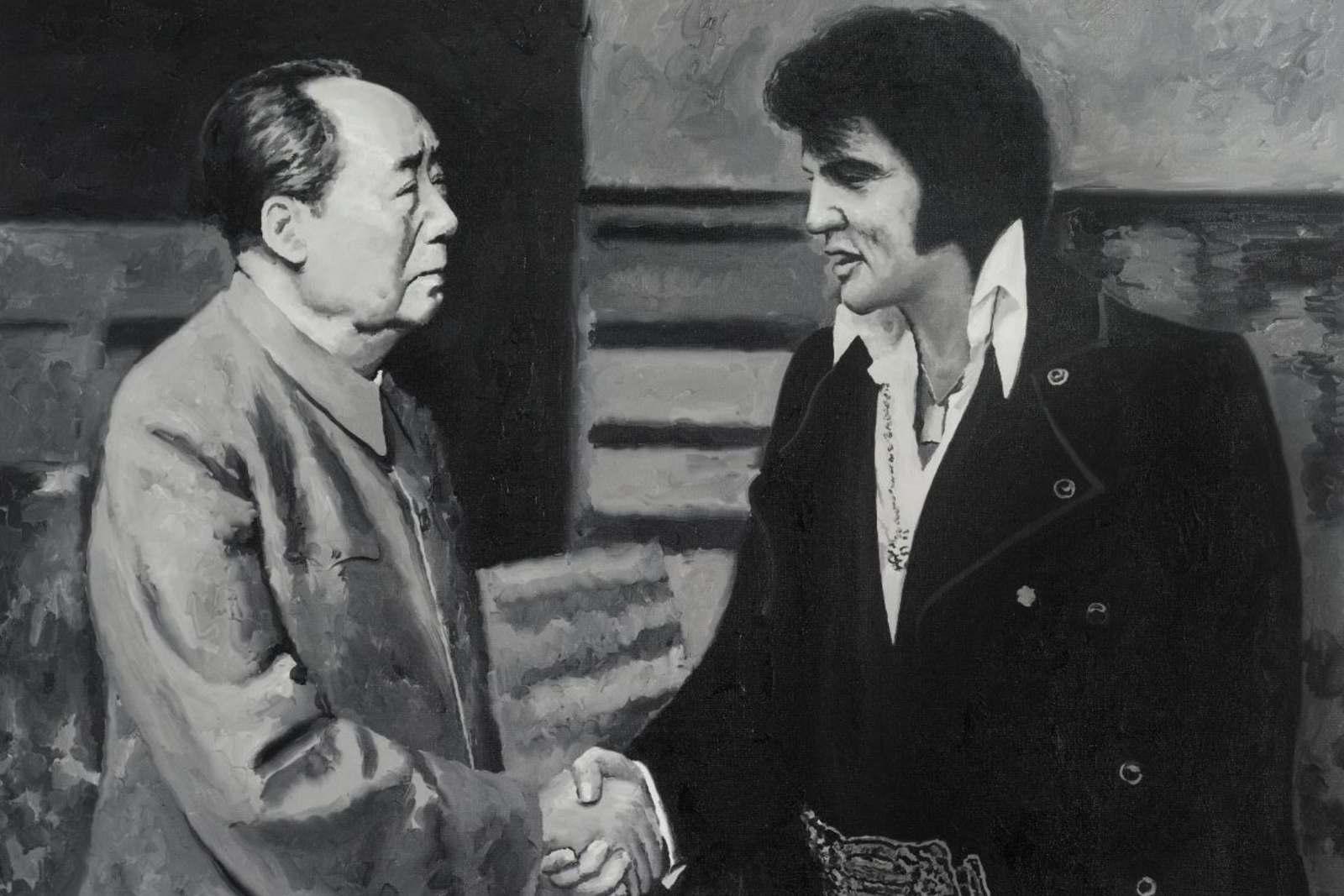
"I think the people were really proud of what they could achieve coming together, and that's sort of why the response from the government was so dismaying really. They had such a large portion of the population who had come together and expressed this quite beautiful moment. And the government just seemed to disregard it completely and placed no value on that at all."
Early demands for an extradition bill to be dropped morphed into a broader pro-democracy movement, one which took a more flexible and modern approach to protesting than the 2014 Umbrella Movement. It harnessed imagery to maintain a sense of unity and solidarity, even as extreme elements engaged in behaviour others might not have condoned. There was "no splitting", Dapiran says, at least in part because police were engaged in even more outrageous acts of violence and losing public sympathy.
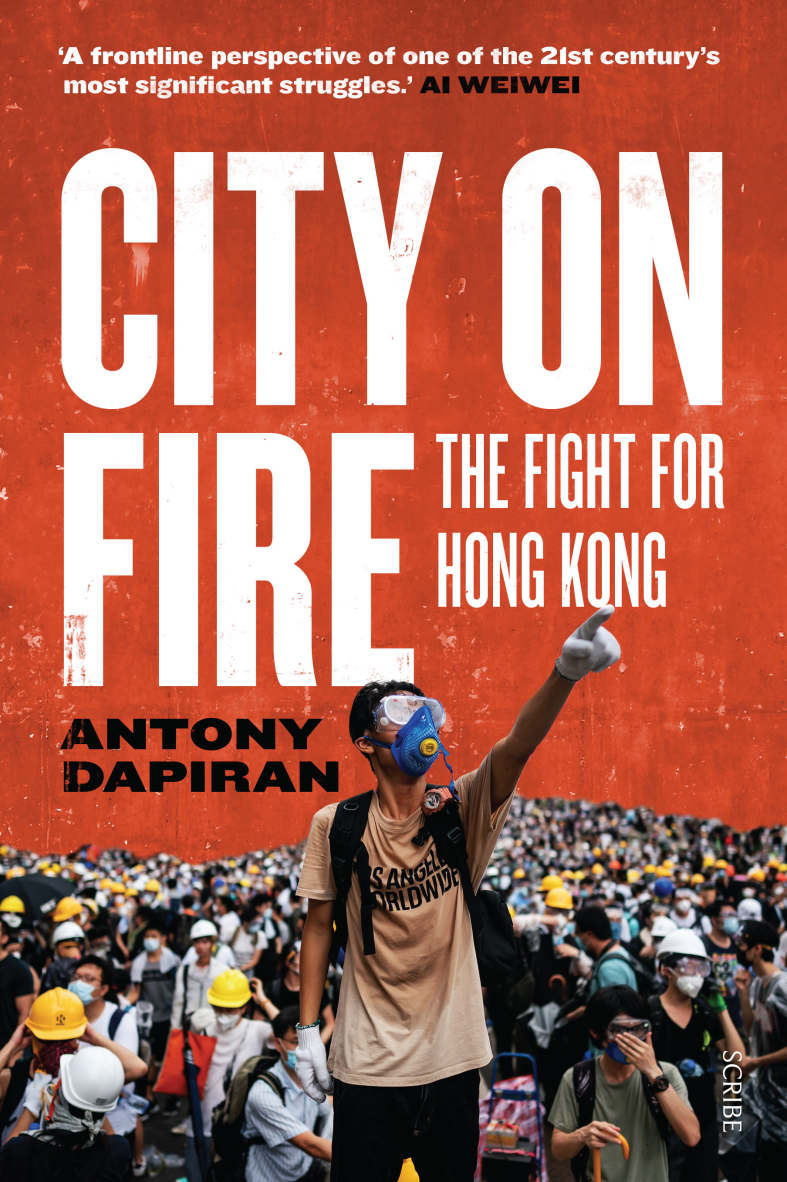
Between witnessing tear-gas canisters being neutralised with witch's hats and bottles of water, and tracing the bursts of blue dye from water cannon, he was also there for enchanting moments when the city came together.
In August, citizens came out to form a 50-kilometre human chain, all holding hands across the city. Such passages are hopeful and uplifting, but as governments around the world are encouraging social distancing and liberal application of hand sanitiser, they also serve as a reminder of how quickly life has changed. Life in Hong Kong of late has been "a continuity of disruption, if you want to put it that way", and with fewer restrictions than Australia.
Even without the pandemic, Dapiran deliberately made his book a document of 2019. There was no telling where the story would lead. In the week we speak, several protest leaders are arrested and charged, sending a chill through the Hong Kong community. Since our lunch, Beijing announced it would push through national security legislation which sparked a fresh wave of protests and the sight of tear-gas returned to the streets. Dapiran says the plan "threatens our rights and freedoms, it threatens our rule of law, and it threatens what little democracy we have".
"At the same time, it certainly gives me pause and makes me reassess my own activities and life here," Dapiran said last week after the plans were announced. "Will it be safe for me to stay here and continue doing what I am doing, writing the kind of things I write? I'm not entirely sure what the answer is, and that is precisely what makes these sorts of laws so pernicious. It is never clear precisely where the lines are drawn, and so leads to people – consciously or unconsciously – adjusting their behaviour just to be safe. It makes the population self-regulating and compliant. That is a very dispiriting future for Hong Kong."
China watchers have wondered whether the coronavirus offered the government cover for the scope and severity of the crackdown, but Dapiran does not quite see it that way. He felt a crackdown would come, as it did for the Umbrella Movement, but the pandemic has likely upset Beijing's plans to win over voters before September's Legislative Council election with a more positive economic argument.
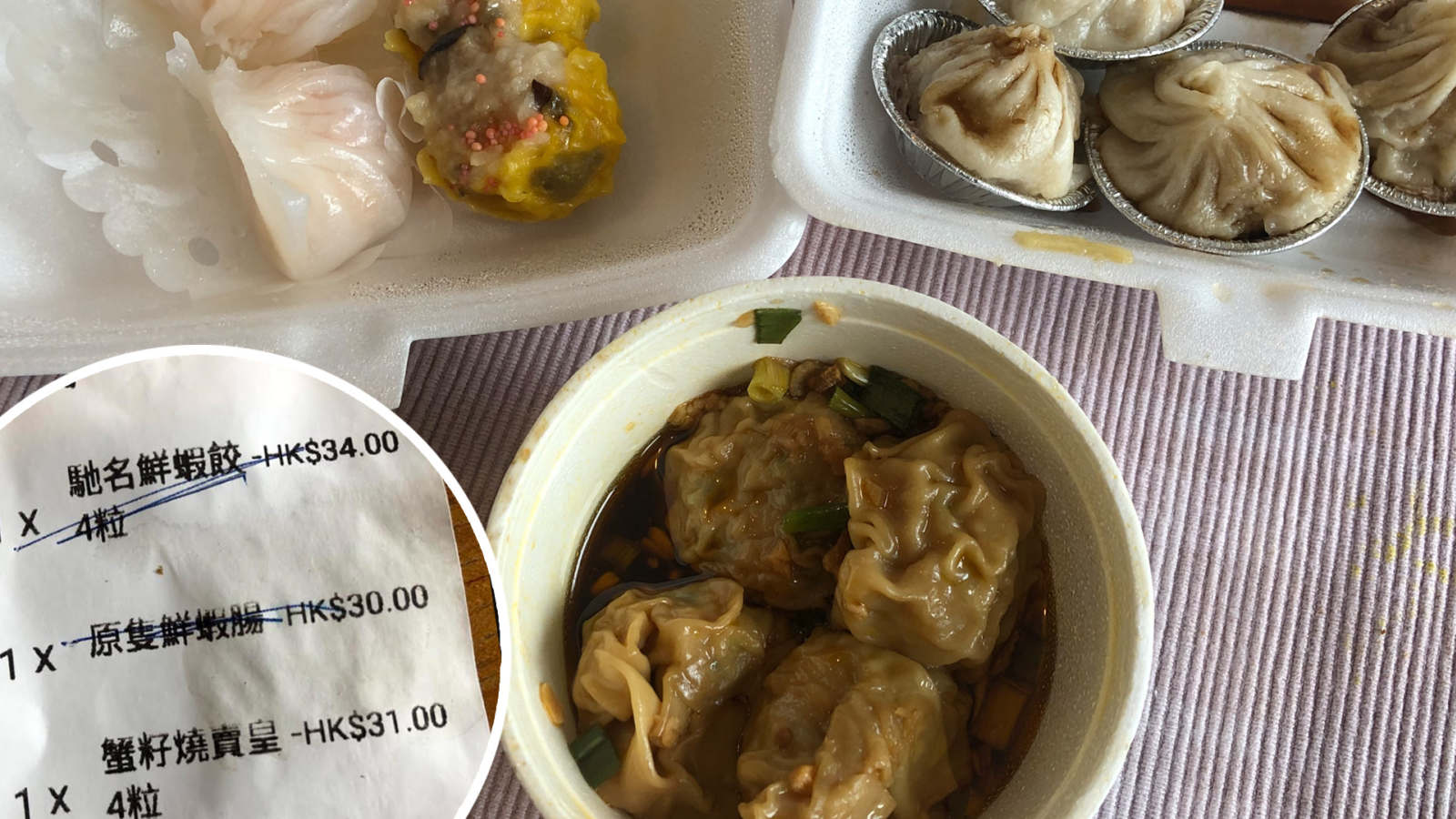
There are, however, a few ways the protest movement has influenced the community response to the pandemic in Hong Kong. The first is the breakdown in institutional trust last year "fed into how people have reacted to the virus", with agitation to shut the borders early. A second example came from striking hospital workers, using a variation of the tactics from the protests, that forced the closure of ports and the introduction of stricter quarantine measures. And Dapiran says civil society more broadly, with a free press and academic freedom, has led to outspoken epidemiologists and microbiologists providing advice.
"I think Hong Kongers look across the border and see in the mainland whistle-blowing doctors being detained and citizen journalists trying to report from Wuhan disappearing and sort of say, 'no thanks, we're proud of what we have here'."
This includes a society wearing its colours more boldly. The yellow circle economy, a loose coalition of traders and food outlets supportive of the movement, has made its presence felt. In a city that until last week had been operating "as close to normal as it can be in a virus situation", these shops with loyalty cards or pro-democracy imagery serve as a street-level reminder that Hong Kong's divisions are as stark as ever.
Dapiran had suggested grabbing a sandwich from one such shop downstairs for our lunch, but an email lag meant he settled for a variety of Hong Kong dim sum: the shrimp dumplings, the shumai pork dumplings, the xiaolongbao pork dumplings and some pork chilli dumplings. Mine were pork, prawn and mushroom, hastily added to a noodle soup, and menu envy creeps in for both his suggestion and the lunch he settled on. Maybe next time, when we're about 7370 kilometres closer.